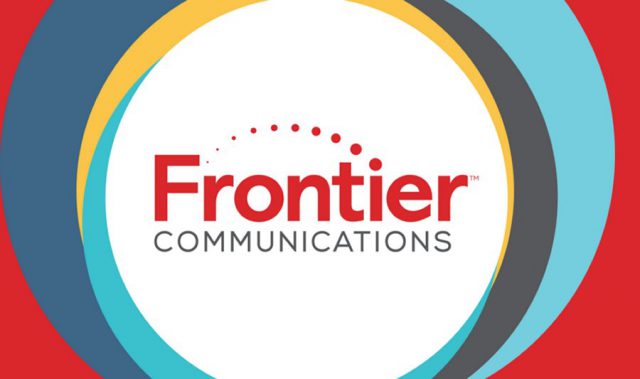 Frontier Communications filed for bankruptcy reorganization protection this week with more than $10 billion in debts and departing customers, despite retention efforts that cost the company more than $5 million a month.
Frontier Communications filed for bankruptcy reorganization protection this week with more than $10 billion in debts and departing customers, despite retention efforts that cost the company more than $5 million a month.
The company had warned investors it was considering restructuring and failed to make a timely bond payment to cover a portion of its debts. Frontier had been in negotiations with debt holders for several months, attempting to secure a Restructuring Support Agreement that would reduce debt in return for an equity stake in the company. At least 75% of unsecured bondholders are reportedly on board with a deal that would free up money to spend on fiber optic upgrades.
Most of Frontier’s legacy customers are served by a deteriorating copper wire network designed for basic landline phone service. The company’s DSL internet service has been roundly criticized for being slow and unreliable. Instead of upgrading copper customers to fiber service, Frontier instead spent billions acquiring new territories from other phone companies, notably Verizon Communications and AT&T. The acquisitions did not deliver the financial returns the company expected, and customers canceled service after Frontier botched billing and service transitions that left some without service for weeks.
Today, Frontier has about four million customers, 3.5 million broadband subscribers and 18,300 employees operating in 29 states. The company has arranged a debtor-in-possession loan of $460 million from Goldman Sachs Bank to continue operating during the bankruptcy reorganization. It also expects to receive an additional $1.35 billion in cash later this month from the sale of its territories in Idaho, Montana, Oregon, and Washington to Northwest Fiber.
Frontier also divulged new details about its deteriorating business to the Bankruptcy Court:
- Frontier estimates it spends approximately $1,000 for each new residential customer and $2,500 for each new commercial customer.
- Almost all of its new customers sign up for service under a sales promotion. “On average, [Frontier] spends approximately $1.3 million per month on marketing campaigns.”
- Customer retention efforts are crucial for Frontier, which has been losing customers at an alarming rate. Frontier uses three enticements to convince customers to stay: “Save Offers,” “Roll-Off Offers,” and “Discretionary Credits.”
- “Save Offers” are a classic retention tool, offering enticements to customers threatening to cancel. Frontier offers free premium channels, reduced rates, and/or discounted service upgrades to convince customers not to leave. Frontier disclosed it pitches approximately 24,000 Save Offers each month, a sign many customers are prepared to cancel their accounts.
- “Roll-Off Offers” are made to customers calling to complain about their bill after their new customer promotion ends. Frontier regularly offers complaining, bill-shocked customers a new, less generous promotion going forward. For example, an expiring new customer discount of $60/month might be replaced with a $30/month discount if the customer agrees to stay. These offers typically last six months to a year and still leave the customer eventually paying regular prices. Frontier disclosed that it loses many more complaining customers than it keeps after promotions expire. About 16,000 customers per month (or roughly one-fourth of customers complaining about an expiring promotion) are retained as customers because of a roll-off offer.
- “Discretionary Credits” are one-time bill credits given when customers call with service complaints, reports of damage done to private property by Frontier, or missed time guarantees for service calls. Frontier admitted it is currently paying out an average of $3.9 million a month in Discretionary Credits to upset customers.
Post bankruptcy, Frontier has proposed undertaking a modest fiber upgrade program in its more profitable territories where a significant return on investment for fiber upgrades can be demonstrated. That is unlikely to include many of Frontier’s rural service areas.


 Subscribe
Subscribe
Sure they didn’t divulge details on how they gain $10 a month per internet subscriber for router fees, including those who don’t have or use the Frontier-provided version.
The fee which they won’t waive, no matter how many times you call and ask (or complain), just like the $75 installation fee, which they’ll charge you even if they’re just turning you back on at the central office, and technician wasn’t sent to your home…
Please. Frontier, you guys brought this on yourselves.
This surprises me exactly none at all, including Frontier straight up lying in their PR and bankruptcy filings. Their claim of ‘1.2 million fiber customers’? That’s just not even remotely true. For one, they literally just sold off most if not all of their FTTH business to Ziply. Secondly, Frontier has a policy of deliberately misclassifying service. So I would expect at least 50% of that “1.2 million” is actually DSL customers serviced by FTTN pedestals. But even with all that, Frontier is basically cut-rate Windstream. They are the Dollar General to Windstream’s Walmart. And believe you me, rural CLECs… Read more »